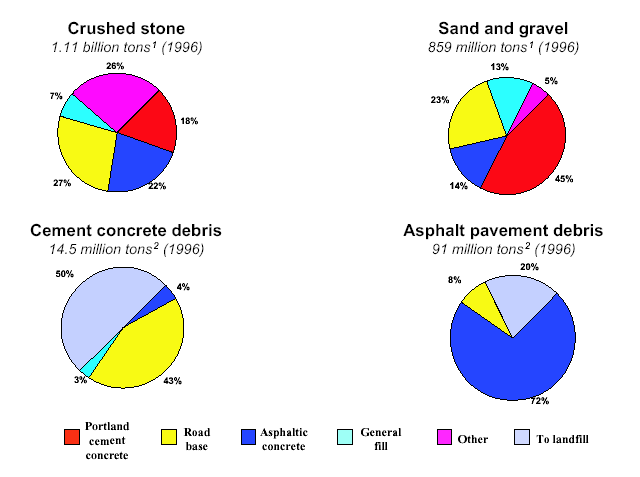Aggregate Types:
Aggregates are used for a variety of purposes. Each purpose requires a specific aggregate type, and specific properties of the aggregate. In general, aggregates are naturally occurring relatively inert materials formed by various geologic processes. The geologic process of formation imparts some of the properties to the aggregate that make it more or less useful.
The aggregates fall into two broad categories, based on their size distribution: Coarse Aggregates and Fine Aggregates. They may be used separately or in combination, depending on their purpose. Natural coarse aggregates are obtained by crushing stone or gravel into desired size distribution. Some coarse aggregates are obtained from recycled material such as slag or old concrete. Fine aggregates fall into two broad categories: natural and manufactured sands. The former are obtained from water-deposited sources, either fluvial or glacial. The latter are screened from the finer fraction of the rock crushing process.
The purpose to which the aggregate is produced determines both the grain size and quality requirements. The quality requirements, from the highest to lowest, are for use in: concrete, filter stone, bituminous mix, base, and sub base. There are, of course, myriad of other uses, but the above mentioned require greatest volumes.
The amount and the proportions of different types of aggregate used in the US are given in the following table (taken from U.S. GEOLOGICAL SURVEY CIRCULAR 1176).
